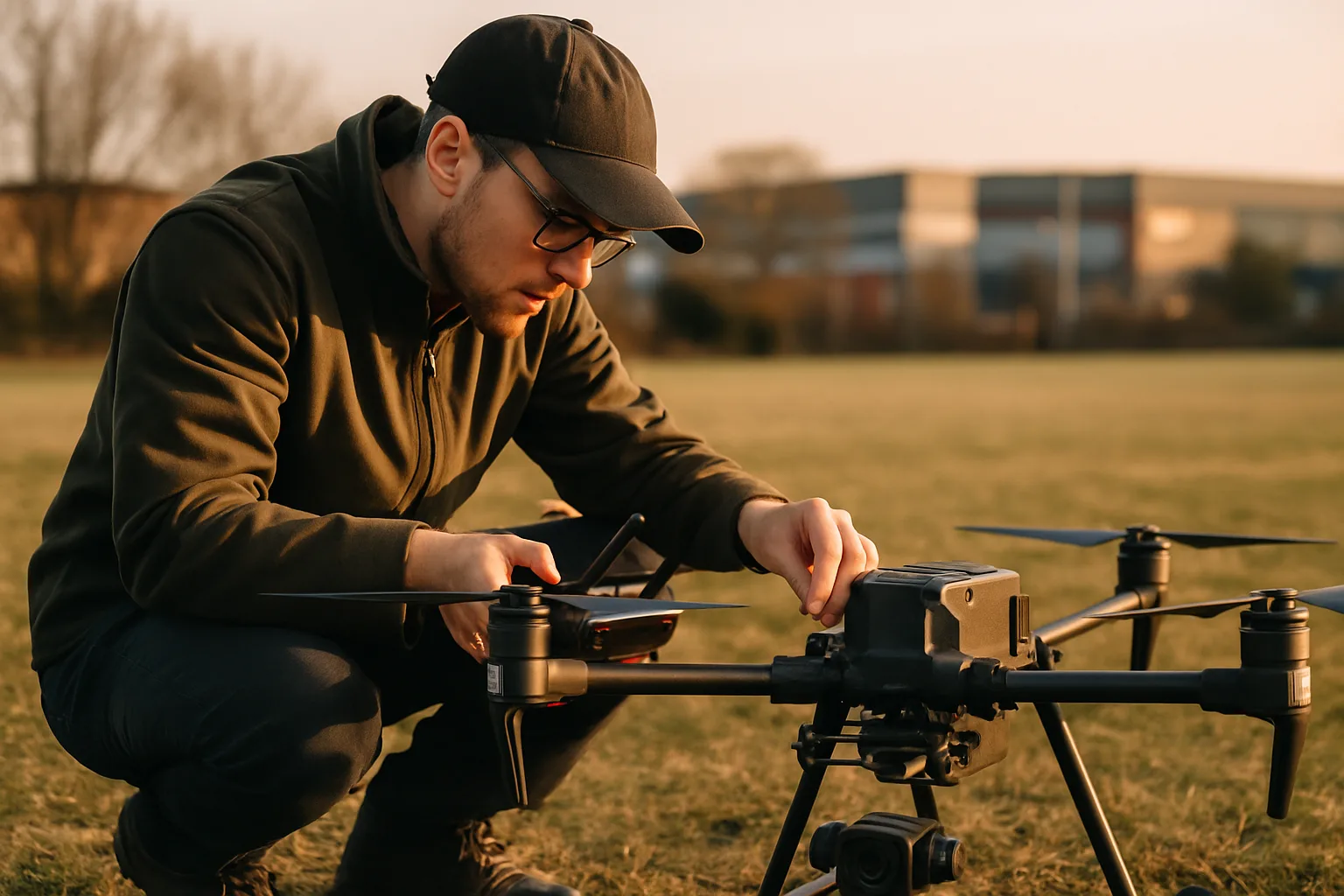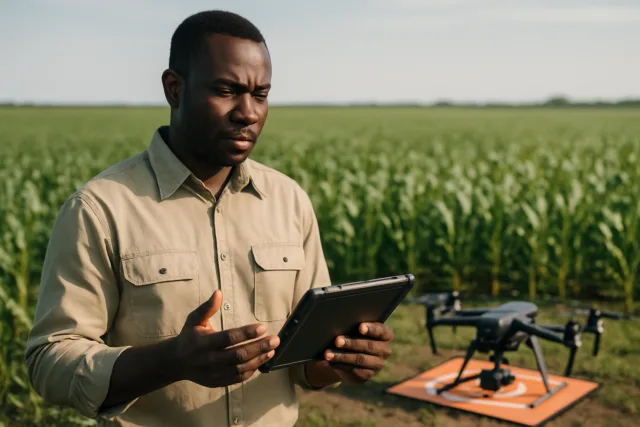The UK drone market is experiencing substantial growth, driven by technological advancements, increasing applications across various sectors, and evolving regulatory frameworks. This analysis explores the current market landscape, key trends, challenges, and opportunities within the UK drone industry.
Market Size and Growth
The UK drone market is poised for significant expansion. Several reports offer slightly varying figures, but the overall trend is strongly positive:
- Market Size: The UK drone market was estimated at $1.01 Billion in 2024.
- Projected Growth: It is projected to reach $2.50 Billion by 2033, exhibiting a compound annual growth rate (CAGR) of 10.60% between 2025 and 2033.
- Alternative Projections: Other reports suggest even more optimistic growth, with one estimating a market size of $1.85 billion in 2023, growing to $9.0 billion by 2035, with a CAGR of 15.468% during the forecast period (2025-2035). Another report estimates the UK drone market to reach $8.55 Billion by 2028.
- Consumer Drone Market: The UK consumer drone market is also showing strong growth, with a revenue of $257.9 million in 2023, expected to reach $598.5 million by 2030, growing at a CAGR of 12.8% from 2024 to 2030.
These figures highlight the robust potential of the UK drone market across various segments.
Key Drivers
Several factors are propelling the growth of the UK drone market:
- Rising Demand for Drone Delivery Services: The e-commerce and logistics sectors are increasingly adopting drones for faster and more efficient last-mile delivery, especially in congested urban areas.
- Expanding Applications in Agriculture: Drones are being utilized for precision agriculture, crop monitoring, and management, leading to increased productivity and reduced operational costs. The UK’s agricultural sector could benefit from a productivity increase of over 30% through the use of drone technology.
- Increasing Use in Construction and Infrastructure: Drones are valuable tools for site inspections, progress monitoring, and infrastructure assessment, enhancing safety and efficiency.
- Technological Advancements: Innovations in drone technology, including improved battery life, AI-powered autonomous systems, and enhanced imaging sensors, are expanding drone capabilities and applications.
- Public Safety and Law Enforcement: Drones are increasingly being used for surveillance, search and rescue operations, and emergency response, improving public safety and security.
- Growing Demand for Aerial Photography and Videography: Drones equipped with high-resolution cameras are in demand across industries such as real estate, construction, tourism, and entertainment for capturing aerial images and videos.
Market Segments
The UK drone market can be segmented by various factors:
- By Type:
- Commercial Drones: Used for various applications across industries.
- Military Drones: Utilized for defense and security purposes.
- By Component:
- Hardware: Includes the drones themselves, along with related components like cameras, sensors, and batteries. Hardware is expected to grow the fastest in the commercial market.
- Software: Encompasses flight control systems, data processing software, and other applications.
- Services: Includes drone operation services, maintenance, repair, and training. Drone services will remain the biggest segment.
- By Application Method:
- Mapping & Surveying: Remains the top drone application.
- Inspection: A rapidly growing application.
- Photography & Filming: Continues to be a popular use case.
- By End-Use Industry:
- Energy: Drones are used for infrastructure inspection and maintenance in the energy sector.
- Agriculture: Precision agriculture and crop monitoring.
- Construction: Site inspection and progress monitoring.
- Logistics and Transportation: Drone delivery services.
- Public Safety: Law enforcement, search and rescue, and emergency response.
Key Trends
Several key trends are shaping the UK drone market:
- Focus on Beyond Visual Line of Sight (BVLOS) Operations: Enabling drones to fly longer distances and perform more complex tasks is a major focus. The Royal Mail has launched its first permanent postal drone delivery service in Scotland, involving BVLOS autonomous deliveries.
- Integration of AI and Automation: AI-powered autonomous systems are enhancing drone capabilities, improving efficiency and reducing the need for human intervention.
- Increasing Use of Drones in Urban Air Mobility (UAM): Drones are being explored for passenger transport and urban logistics, potentially revolutionizing urban transportation.
- Growing Emphasis on Drone-as-a-Service (DaaS): This model allows businesses to access drone technology and services without the need for upfront investment in hardware and training. The “Drones as a service” segment is expected to reach $29.4 billion by 2025 globally.
- Development of Drone Traffic Management Systems: To ensure the safe and efficient operation of drones in increasingly crowded airspace, advanced traffic management systems are being developed.
Regulatory Landscape
The regulation of drones in the UK is governed by the Civil Aviation Authority (CAA). Key aspects of the regulatory framework include:
- CAA Regulations: The CAA sets the rules for drone operations, including requirements for registration, pilot qualifications, and operational restrictions.
- Drone Code: The CAA’s “Drone Code” outlines key regulations, emphasizing safety and responsible use. The acronym DRONE stands for:
- Don’t fly near airports or airfields.
- Remember to stay below 400 feet (120 m).
- Observe your drone at all times – stay 150 feet (46 m) away from people and 500 feet (150 m) away from crowds and structures.
- Never fly near aircraft.
- Enjoy responsibly.
- Operator and Flyer IDs: Operators of drones weighing over 250g or equipped with a camera must register with the CAA and obtain an Operator ID. Anyone flying a drone over 250g must pass a basic test with the CAA to get a Flyer ID.
- No-Fly Zones: Drones are banned from flying within 5 kilometers (3.1 mi) of airport runways.
- Height Restrictions: Drones must not fly above 400 feet (122 meters) above the surface.
- Visual Line of Sight (VLOS): Drones must be operated within visual line of sight, unless specific authorization is obtained for BVLOS operations.
- Commercial Operations: Commercial drone operations require permission from the CAA and insurance is mandatory.
- Transitional Period: Until January 2026, drones without a class marking can be flown under more relaxed rules.
Understanding and complying with these regulations is crucial for safe and legal drone operations in the UK.
Challenges
Despite the promising outlook, the UK drone market faces several challenges:
- Regulatory Hurdles: Evolving regulations and the need for clear guidelines can create uncertainty and hinder market growth.
- Privacy and Safety Concerns: Public concerns regarding privacy, data protection, and safety need to be addressed to foster trust and acceptance of drone technology.
- Public Acceptance: Gaining public support for widespread drone use, especially in urban areas, requires effective communication and demonstration of the benefits.
- Weather Limitations: The UK’s weather conditions can be unpredictable, affecting drone operations and reliability.
- Airspace Integration: Integrating drones safely and efficiently into existing airspace management systems is a complex challenge.
- Security Risks: Mitigating the risks of drone misuse, including unauthorized surveillance and malicious activities, is essential.
Opportunities
The UK drone market offers numerous opportunities for growth and innovation:
- Development of Specialized Drone Solutions: Creating tailored drone solutions for specific industries and applications can drive market expansion.
- Advancements in BVLOS Technology: Overcoming the limitations of VLOS operations will unlock new possibilities for drone delivery, infrastructure inspection, and other applications.
- Growth of the Drone Services Sector: Providing drone operation, maintenance, and training services can be a lucrative business opportunity.
- Collaboration and Partnerships: Fostering collaboration between drone manufacturers, software developers, service providers, and end-users can accelerate innovation and market adoption.
- Government Support and Investment: Continued government support for research and development, infrastructure development, and regulatory frameworks can stimulate market growth.
- Focus on Sustainability: Developing eco-friendly drone solutions and promoting the use of drones for environmental monitoring and conservation can align with sustainability goals.
The UK as a Leader
The UK drone market is among the top in the world, with significant potential for growth. The country’s robust economy and global influence make it an ideal environment for the drone industry to thrive. By leveraging its strengths in services and various industries, the UK can continue to explore the potential of drones in areas such as healthcare, transportation, and infrastructure. With the right support and investment, and by addressing the speed of regulatory processing, the UK has the potential to excel in its use of drone technology.
Conclusion
The UK drone market presents a dynamic and rapidly evolving landscape. While challenges remain, the opportunities for growth and innovation are substantial. By addressing regulatory hurdles, fostering public trust, and capitalizing on technological advancements, the UK can solidify its position as a leader in the global drone industry.





